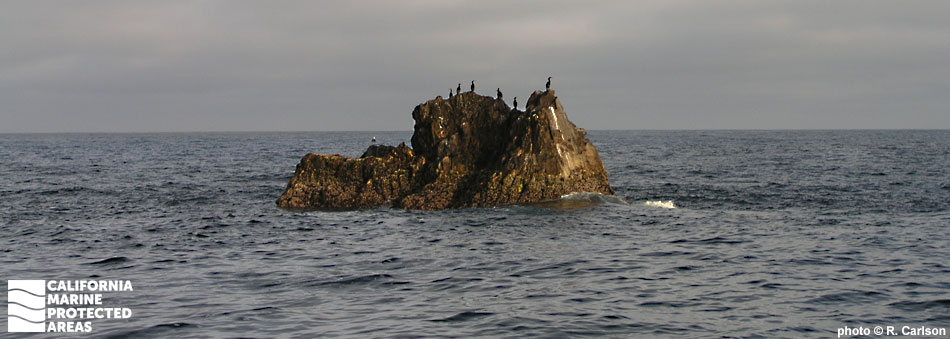
Overview
Begg Rock State Marine Reserve (SMR) sits 60 miles south of Ventura, far off the southern California mainland and more than eight miles off the northwest side of San Nicolas Island. This marine protected area (MPA) safeguards the waters around Begg Rock and encompasses nearly 38 square miles of the Pacific Ocean.
Begg Rock is an exposed offshore pinnacle surrounded by rocky reef habitat. It rises 300 feet from the ocean floor, its pinnacle reaching 15 feet above the ocean's surface. Although most of the deep seafloor within the SMR is sand and other soft sediments, over 13 square miles of rocky seafloor provides shelter for an amazing array of sea life within its crags, crevices and ridges. Exposed to strong open ocean currents, the massive pinnacle system is covered with filter feeders such as mussels, anemones, bryozoans, sponges, and scallops.
This offshore SMR often experiences rough and windy conditions. Although not out of reach, visiting this MPA requires a seven- to eight-hour boat ride from Ventura.
Regulations
It is unlawful to injure, damage, take, or possess any living, geological, or cultural marine resource.
California Code of Regulations Title 14, Section 632(b)(115)(opens in new tab)
Quick Facts
MPA size: 37.96 square miles
Depth range: 0 to 374 feet
Habitat composition*:
- Rock: 13.20 square miles
- Sand/mud: 24.76 square miles
*Habitat calculations are based on three-dimensional area and may exceed the total MPA area listed above.